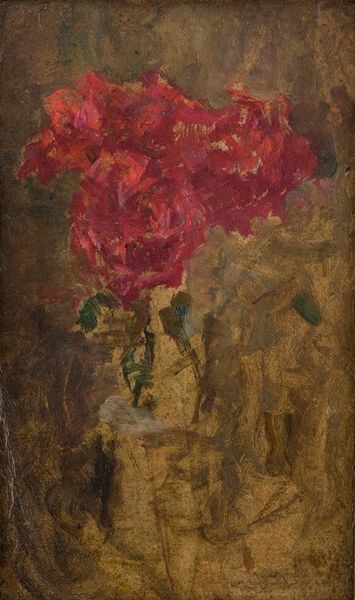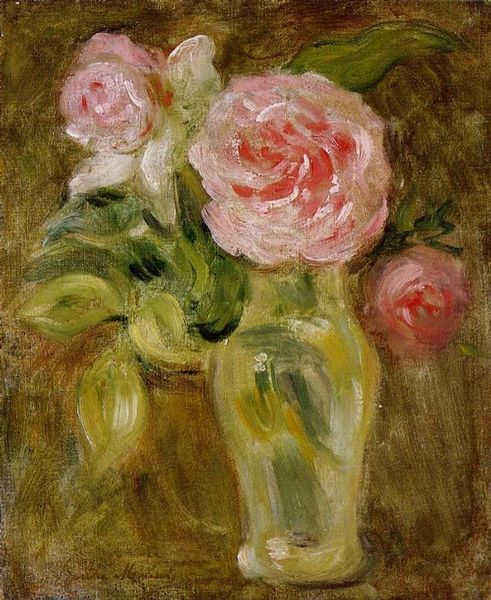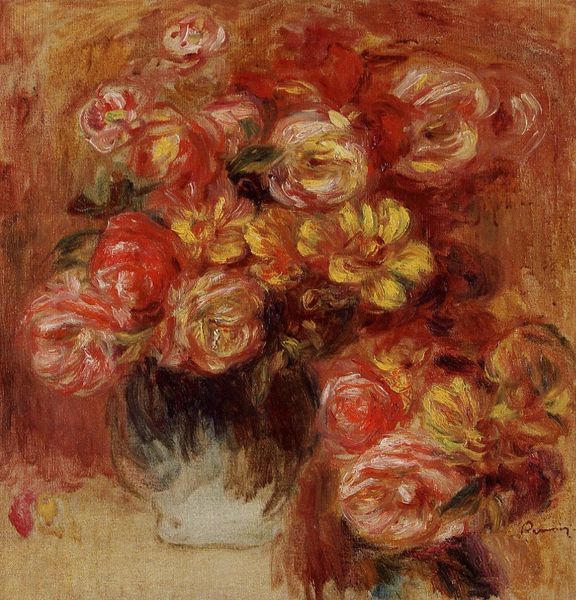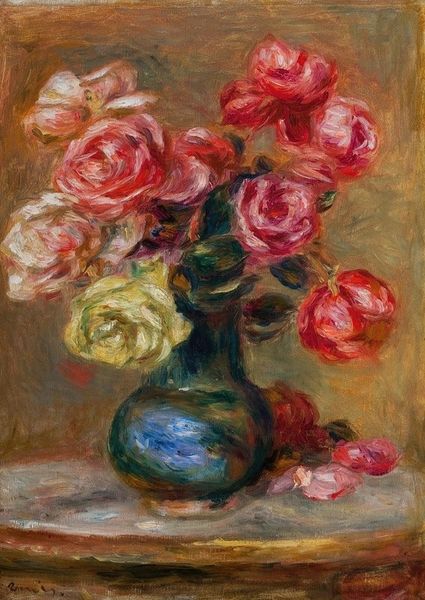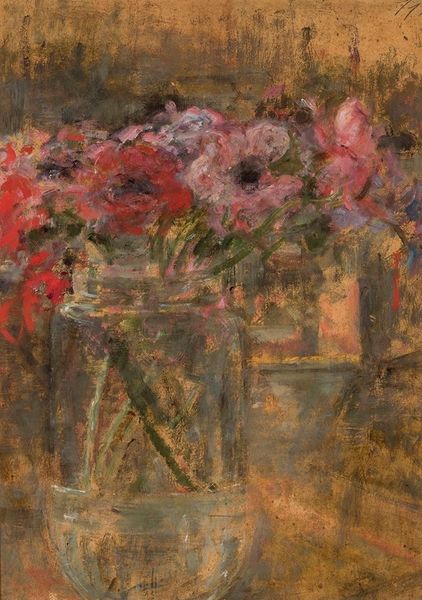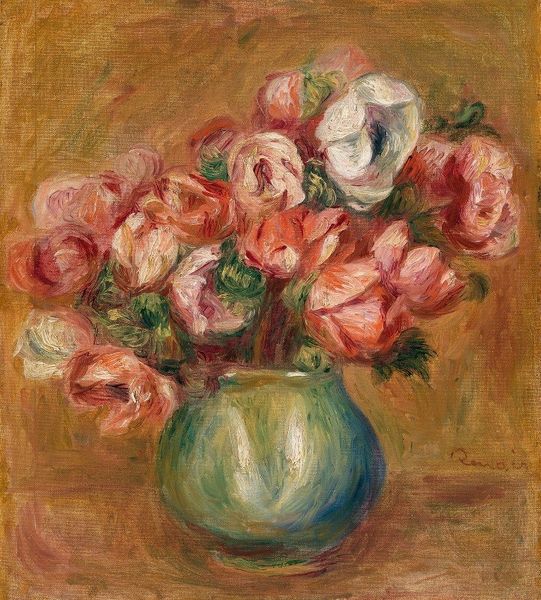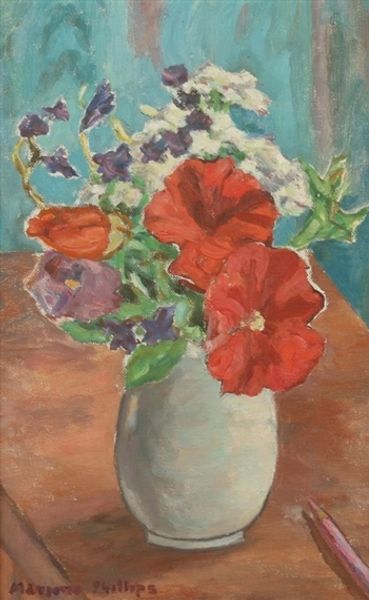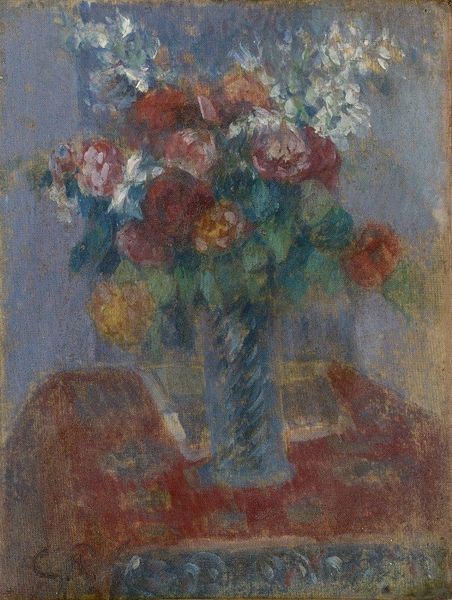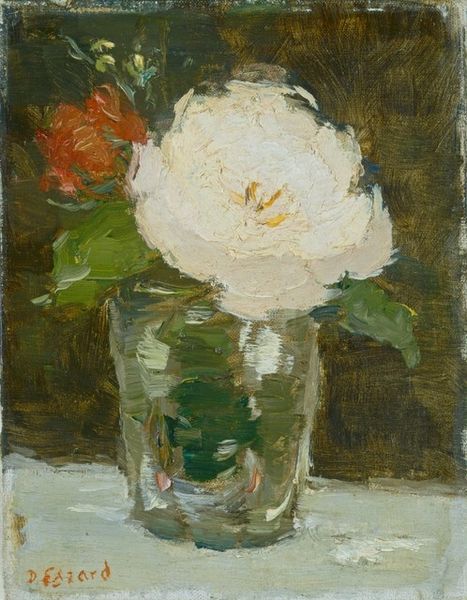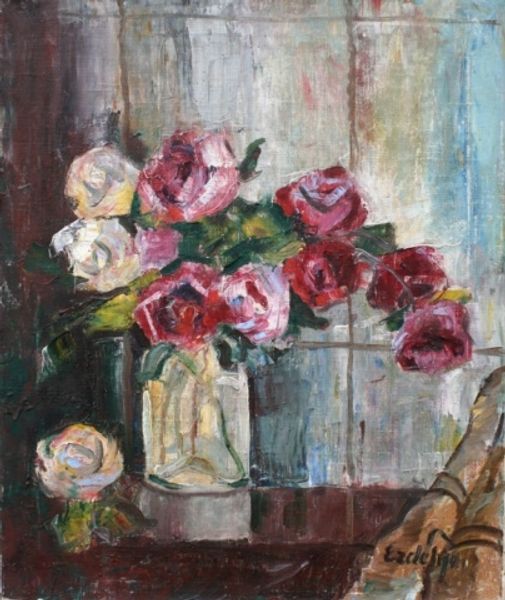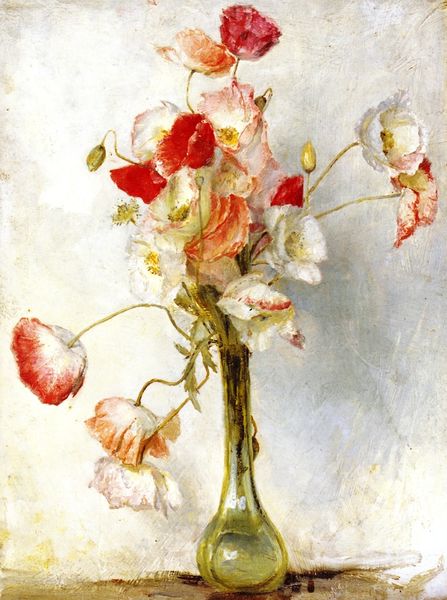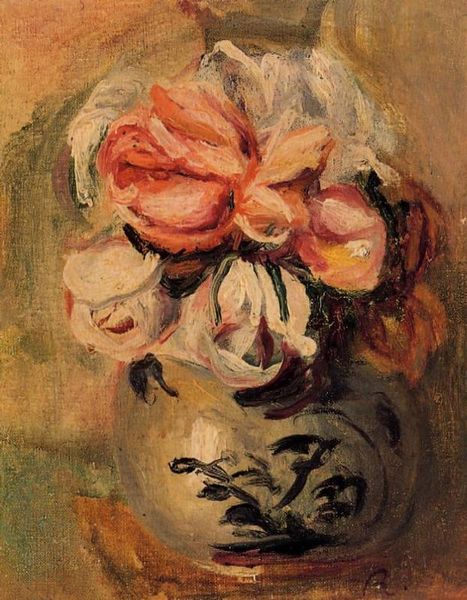
Copyright: Public Domain: Artvee
Editor: So here we have "Gladioli," an oil painting by Olga Boznanska from 1930. I find the overall impression to be quite melancholic; the muted colors create a hazy, dreamlike effect. What do you see in this piece? Curator: The flowers certainly exude an aura of faded glory. Notice how the gladioli, symbols of strength and, ironically, of death, are depicted on the verge of withering, their vibrant red muted by a somber palette. This can symbolize not just physical fading, but also the ephemerality of cultural and personal memory. Editor: The flowers as a symbol of fading memories… I hadn’t considered that. Do you think the artist consciously chose gladioli for this symbolism? Curator: Likely so. Boznanska's loose brushstrokes, characteristic of Post-Impressionism, almost obscure the flowers' details. It makes you wonder: are we seeing a conscious attempt to both capture and simultaneously veil an aspect of memory, much like how our recollections sometimes fade and shift over time? The “gladiolus” recalls gladiatorial combats - does this connect with an historical sense of loss? Editor: That's a really fascinating interpretation. So the muted color palette combined with gladioli suggests the transience of cultural or even historical narratives, right? Curator: Exactly. How often do we choose to forget elements of our own narrative? How is the vibrant vitality of life remembered once one passes on? Editor: This makes me see it completely differently. I initially saw a pretty still life, but it is deeper; I now recognize a statement about memory and the weight of history. Curator: And hopefully this experience also illustrates how artistic choices influence our reception, and how different viewers come to perceive diverse shades of meaning.
Comments
No comments
Be the first to comment and join the conversation on the ultimate creative platform.
